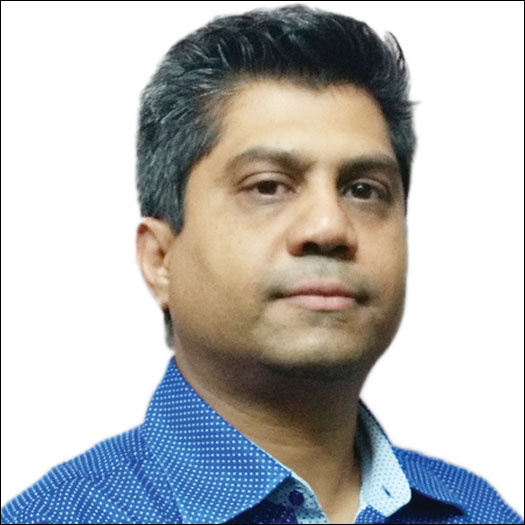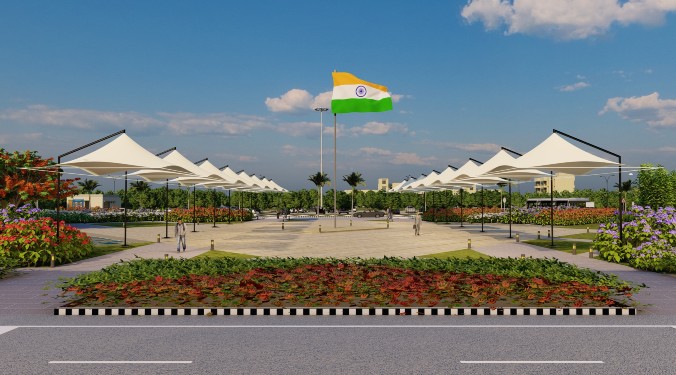
Geosynthetics is adding value by either reducing the total cost or by prolonging the life of the structures as compared to conventional Solutions.
Tiru Kulkarni, President, Geo Division, Garware wall Ropes Ltd
Technical textiles are gaining popularity across the industry. How do you see their applications in construction and infrastructure sector?
Technical textiles, which are termed as geosynthetics in the infrastructure industry, first came into usage in the mid- 1990s in India. Since then, geosynthetics have gradually become an intrinsic part of the Indian infrastructure industry with usage in applications like highway construction, river channelling, coastal protection, slope and erosion mitigation especially in hilly terrain, and landfill and industrial linings.
These applications straddle the gamut of needs for the construction and infrastructure development sector today. Geosynthetics is adding value by either reducing the total cost or by prolonging the life of the structures as compared to conventional solutions.
What are the advantages of using advanced technical textiles?
When we talk about the Indian infrastructure industry, the reliance has been on traditional materials of construction like concrete and boulders. All of these materials are non-renewable – for concrete the basic ingredients are cement (limestone) and aggregates which are a limited resource for India.
Geosynthetics offers an alternative material of construction which has the advantages of economy, durability and eco-friendliness. As compared to traditional materials, geosynthetics reduces overall cost of construction by using locally available materials like soil or sand. It also has longer life span due to improved durability characteristics. Usage of geosynthetics in roads can delay rutting or cracking thereby prolongs the serviceable life of the road. Also usage of locally available materials makes it eco-friendly.
What are the innovations happening in this space?
Natural fibres are gradually emerging as essential ingredients of various types of textiles in view of the increasing global concerns. Reduction of carbon footprint in constructions is currently attracting global attention, warranting innovations in construction technology with stress on ecocongruity.
In this context increasing use of eco-concordant materials made of natural fibres to the extent feasible in constructions is considered significant. Textile technology is at the same time poised to take an innovative turn by manufacturing products that could meet the technical requirements on the one hand and could help maintain eco-congruity on the other.
Given the scope of the technical textiles in emerging economies, how is the concept catching up in India?
The global geosynthetics market is expected to generate revenues of US $ 12.8 billion by 2020, growing at a CAGR of over 10 per cent. The market growth in the developing countries of Central and South America, and Asia are slated to drive the global demand in geosynthetics due to their focus on infrastructure development. Therefore, it is clear that the global future for geosynthetics is linked to the emerging economies.
In India, the spending in the 12th Five-Year Plan (2012-17) in infrastructure is estimated to be US $ 1 trillion which is expected to grow for infrastructure activities for the 13th Plan (2017-2022). India has so far been a little slow in the utilisation of geosynthetics mainly due to a lack of awareness as well as due to rigidity in the administrative machinery that did not allow alternative means of construction.
Over the past few years, a number of strides have been made in raising awareness of the benefits of geosynthetics as well as formulation of codes and guidelines for Indian conditions, which will enable the users to take informed decisions on geosynthetic usage. With these continuing initiatives, it is expected that the usage of geosynthetic technology for India will receive a major boost in the years to come and that geosynthetics will become an intrinsic part of every infrastructure project undertaken.
What are your offerings in this domain?
Garware is one of the few companies in the Indian geosynthetics domain that offers end-to-end solutions for almost all the sectors of application. This means that Garware operates as an EPC (Engineering, Procurement and Construction) company in the geosynthetics domain. We have undertaken projects predominantly in the areas of landfill and lining engineering; coastal and river protection structures; rock fall mitigation for roads and railways; and retained earth structures and slope stabilisation for highways.
Let us know about your future roadmap.
Garware aims to consolidate its position as a leading EPC player in the geosynthetics domain in India. We also plan to target select export markets which have a need for the products manufactured by us.
10
Cookie Consent
We use cookies to personalize your experience. By continuing to visit this website you agree to our Terms & Conditions, Privacy Policy and Cookie Policy.









